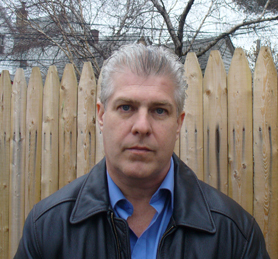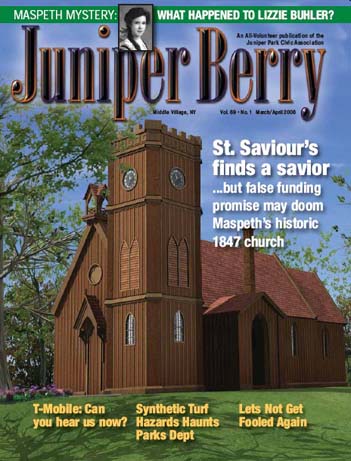Gathering evidence at a crime scene today is a highly technical procedure and is the job of forensic detectives and the medical examiner. The results they yield via their examinations of the scene and the remains of the victim are reported to homicide detectives who use that information to identify and narrow down the list of potential suspects. In the case of Lizzie Buhler, the coroner pretty much handled everything, technology was lacking and he had a long list of suspects to sift through.
We would term Adam Krummick a Person of Interest. There is obviously no eyewitness account or tie-in that we yet know of to Lizzie Buhler except that Mr. Krummick found the body. On that basis, the Coroner Brandon and today’s detectives would carefully analyze and scrutinize Krummicks’s statement searching for any inconsistencies and implausibilities. If the statement “passes the smell test” Krummick would not yet graduate to “suspect” status.
John Sayr, the young man who once took Lizzie to the Lyceum Theatre in Brooklyn, would be on the radar, but even less so than Krummick. As a former beau, investigators would be remiss in not giving him a cursory glance (Coroner Brandon did well in uncovering and interviewing Sayr) so this would be a checklist basic.
But more importantly, Sayr cites Joseph Easer as the reason for discontinuing the relationship. That would raise a flag about Easer. Was Sayr saying that Easer is a jealous person? Is Joseph Easer prone to violence, especially in regard to his relationships? Did Easer threaten Sayr about the relationship with Lizzie, or any other males Sayr knew of, especially as it involved other women? Coupled with Easers curious and all too convenient disappearance I believe any investigator would be on red alert. We’ll return to this “prime” suspect in a moment.
Richard Feldman would be considered a suspect. Feldman was identified as talking with Lizzie the night of her death. Anyone who is last seen, or is one of the very last seen with a victim, earns themselves a place high on the list. The fact that Feldman admitted to having once been intimate with Lizzie increases police interest in him. His statement, whereabouts and movements for that Friday night, Saturday morning would be very closely examined and double checked.
John Lauby would most certainly be a suspect. He, like Feldman, was seen with Lizzie in the last hours of her life. But suspicion cast on Lauby is of a greater degree than with Richard Feldman. We have a witness (Franz Abt) that circumstantially places Lauby alone with Lizzie. Judging from Mr. Abt’s statement there is a possibility that the conversation may have been somewhat tense. There is also the possibility that this encounter occurred late at night, according to Abt. Late enough to place Lauby with Lizzie in close proximation to her time of death and we can assume, in close proximity of the tracks. An in depth examination and interview would have to be conducted with John Lauby as well as a detailed check of his timelines and whereabouts.
However, there are several issues in Lauby’s favor that would not allow for a custodial interrogation. First would be the backing of his family who state Lauby was home until 8:30, took the horse to order the grain and returned 10 minutes later, going to sleep immediately thereafter. His going to Flushing and Garrison for grain is easily verified with the proprietor of the store. Richard Feldman’s timeline appears to dovetail with Lauby’s as to when they met up with Buhler, even if there is an inconsistency as to he met up with whom first. Feldman’s statement also points out he observed Lauby and Lizzie part company, as Lizzie walked alone toward Schumacher’s Park.
And finally, although Abt would be considered an unbiased and therefore credible witness, a professional investigator would be troubled by his poor attention to time lines.
Abt states he came home from work “between 6 and 7 o’clock” He laid down “for a little nap” that he estimated to be for 3 hours. He states he went to his back porch where he observed the conversation some time between 10 and 11 o’clock. People generally have a much better sense of time estimation when it comes to getting home from work. A one hour time differential in both his stated time lines shows poor attention to time management and awareness. Though maybe not crucial to one’s personal life, it would give an investigator pause, and would have to be taken into account when weighing Lauby’s statement (alibi) with Abt’s observation. To take it one step further, Franz Abt is described as running a beer saloon. There is a possibility that Mr. Abt’s “little nap”( of 3 hours) was actually the result of sleeping off some consumption of beer. It does not make Abt dishonest. But it should cause a fair minded investigator to take that into account, when analyzing Abt’s statement and timelines, he could be off by quite a bit. It may be that John Lauby’s timeline is the more accurate reflection.
Joseph Easer would unquestionably be the prime suspect in a Lizzie Buhler homicide investigation whether it be 1892 or present day. Mr. Sayr leads us to believe Easer is romantically involved with Lizzie although there are reports of his “stout denials” of this in part one of the essay. This inconsistency would need to be explored deeply. He disappears around the time of her death. That of course, speaks for itself. The locating of Easer would be a top priority and both his family and close acquaintances would be questioned as to his hang outs, both in and out of the area, and people he would likely stay with in the area and other communities. If we were searching for Easer today, we would obtain a subpoena for his cellular telephone records, and get the listing for all the people he called from Friday evening to the present moment. Those people would be questioned about Easer and his whereabouts. Since cell phones use cellular towers to access the satellites that provide service, the police would “triangulate” the towers. That means they would determine what towers Easers cell phone was utilizing to make and receive calls. This would greatly narrow the search of his location (usually just a few square blocks.) With the information provided by family, friends and acquaintances (and not so friendly Easer acquaintances), a solid lead would most likely emerge as to who in that specific area Easer may be with.
Once found, or voluntarily turning up, Easer would be questioned at length. The nature and cause of his absence would have to be explained, down to the smallest detail and each element verified. Assuming no other evidence has emerged showing a stronger suspect, or the investigation does not point to suicide or an accident, Easer would be asked to voluntarily submit to DNA testing. He would also be asked to consent to a search of his home. The search would be for clothing that Easer had worn Friday night and any article of clothing that contained bloodstains. The consented search would also most likely include a search of the sinks, showers, bathtubs, and washing machines in the home and all plumbing piping connected. This would be done in an effort to find traces of Lizzie’s blood that Easer may have washed off his skin or attempted to launder from his clothing. Blood can remain in the plumbing for weeks and even months, perhaps longer, and with today’s technology, can easily be traced to a potential victim.
Should Easer decline to submit to the DNA swabbing and search of his home (which is his constitutional right under the fourth amendment preventing unreasonable search and seizure) a search warrant must be applied for. Short of forensic evidence tying Easer to the scene or the body, a witness coming forward with credible and strongly damning evidence , or a statement by Easer so obviously false and suspicious, the chances of a Judge granting the warrant are unlikely as the legal standard would appear to have fallen below an acceptable threshold. In which case, our mystery remains unsolved, until further investigation.
Kenny O’Keefe was an NYPD officer for 20 years, having retired as a Detective Sergeant in 2003. He is currently the owner and president of Global Investigative Systems.




